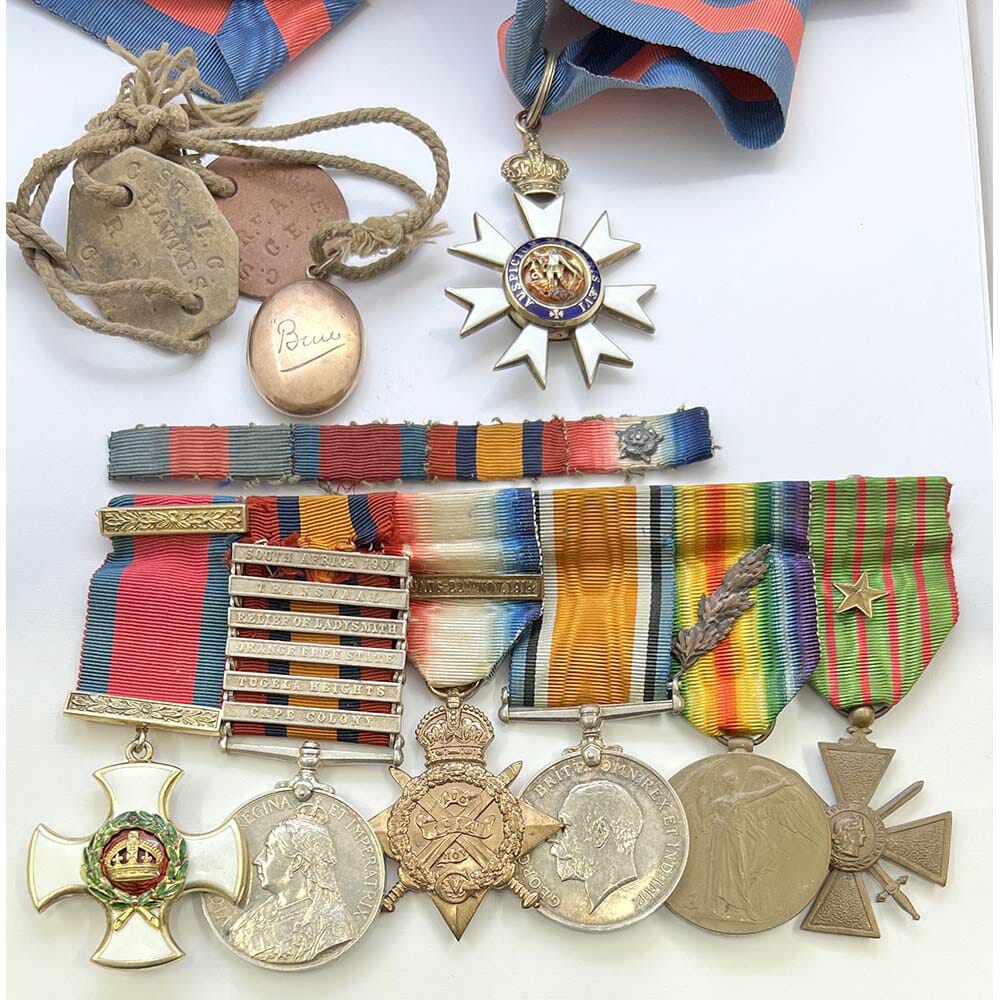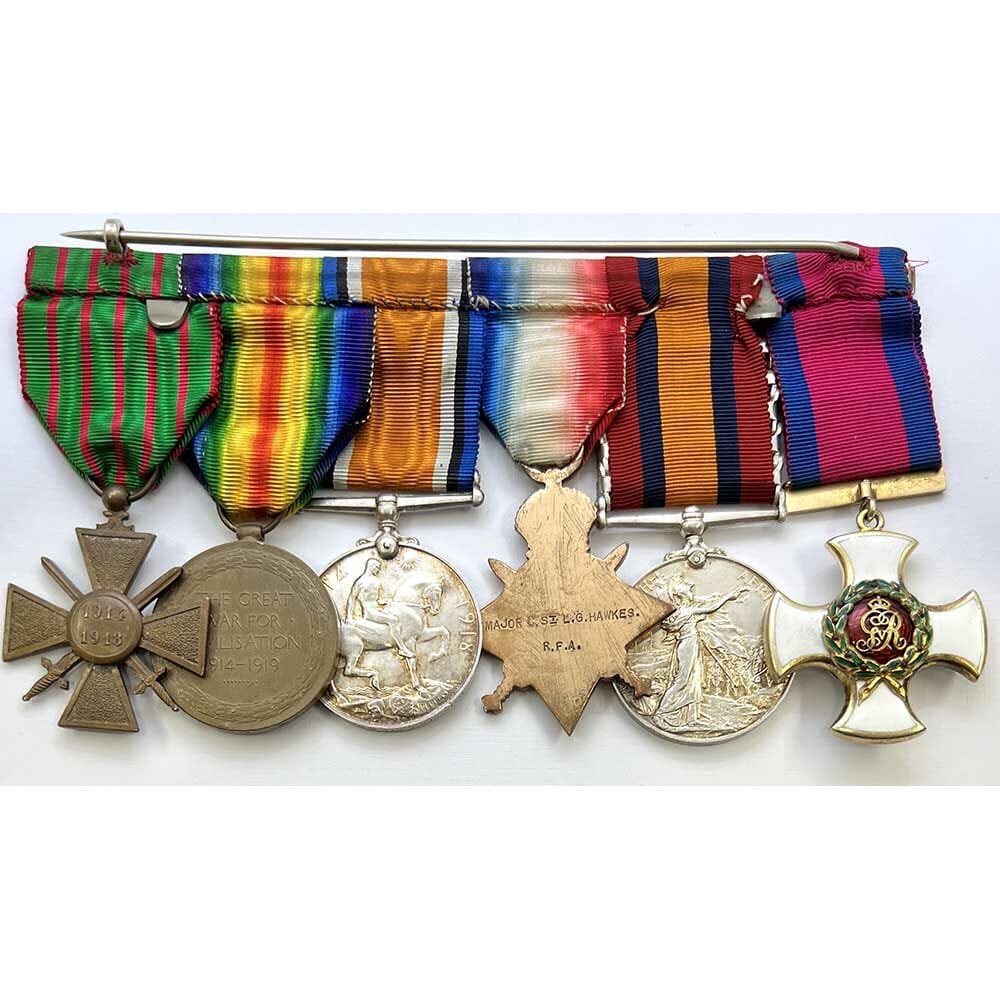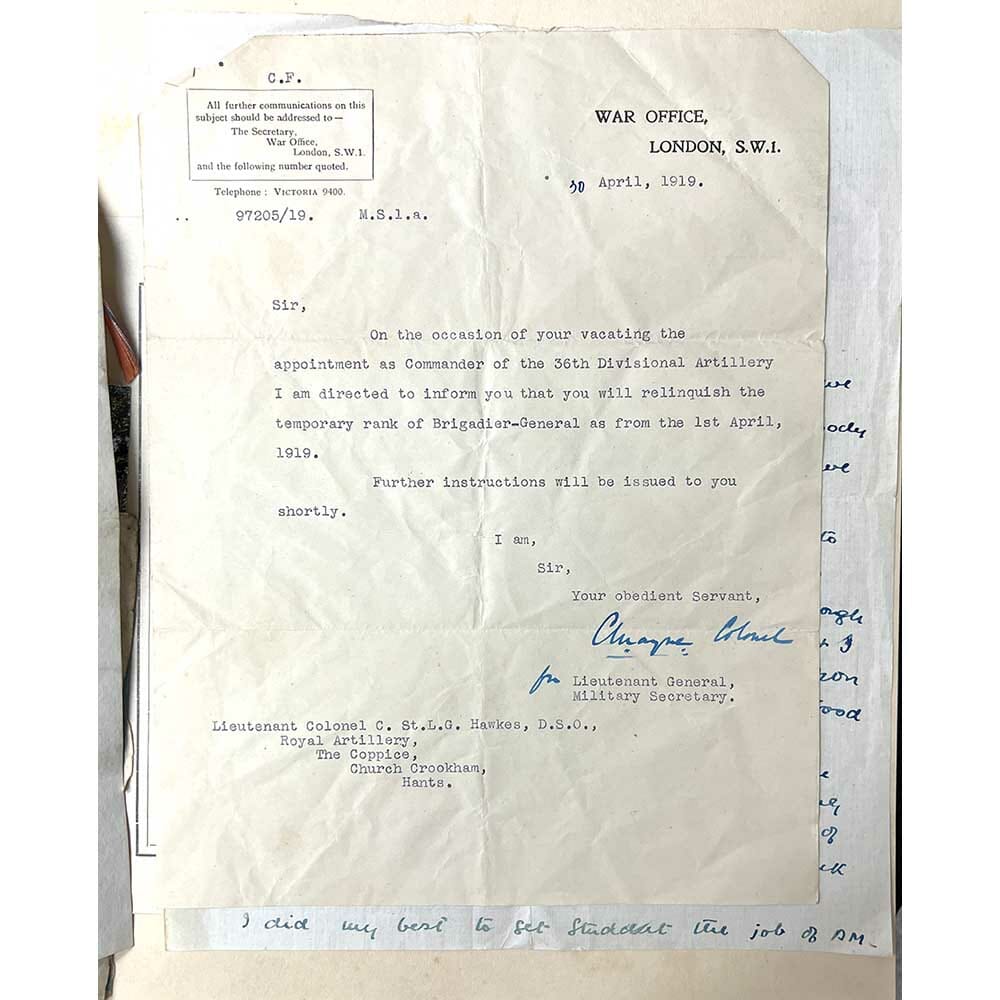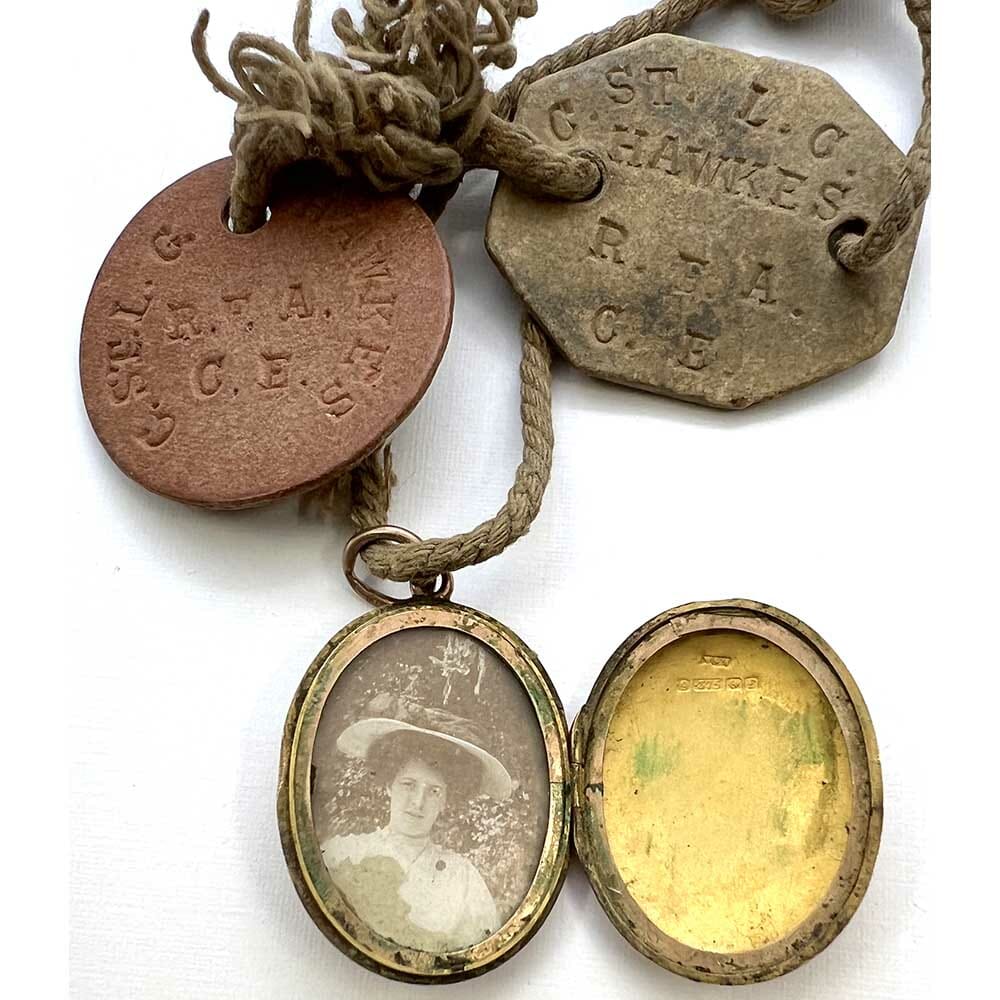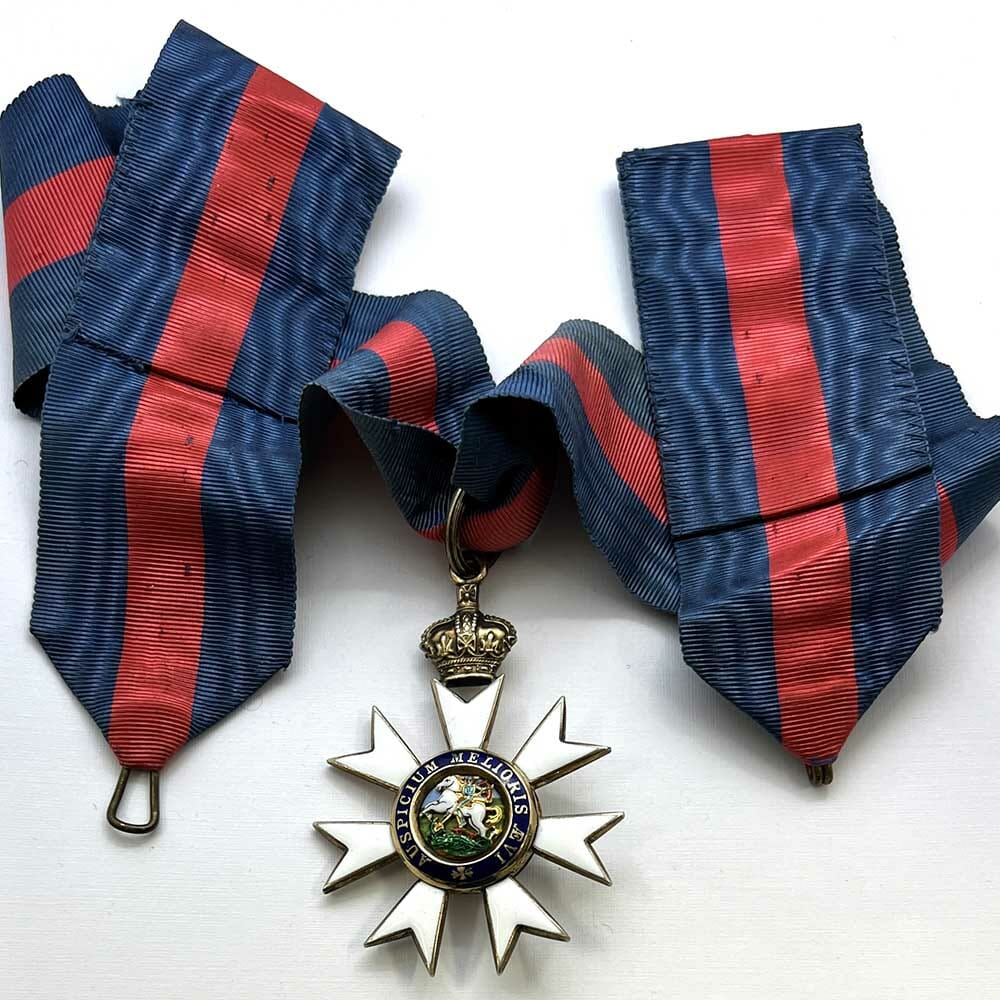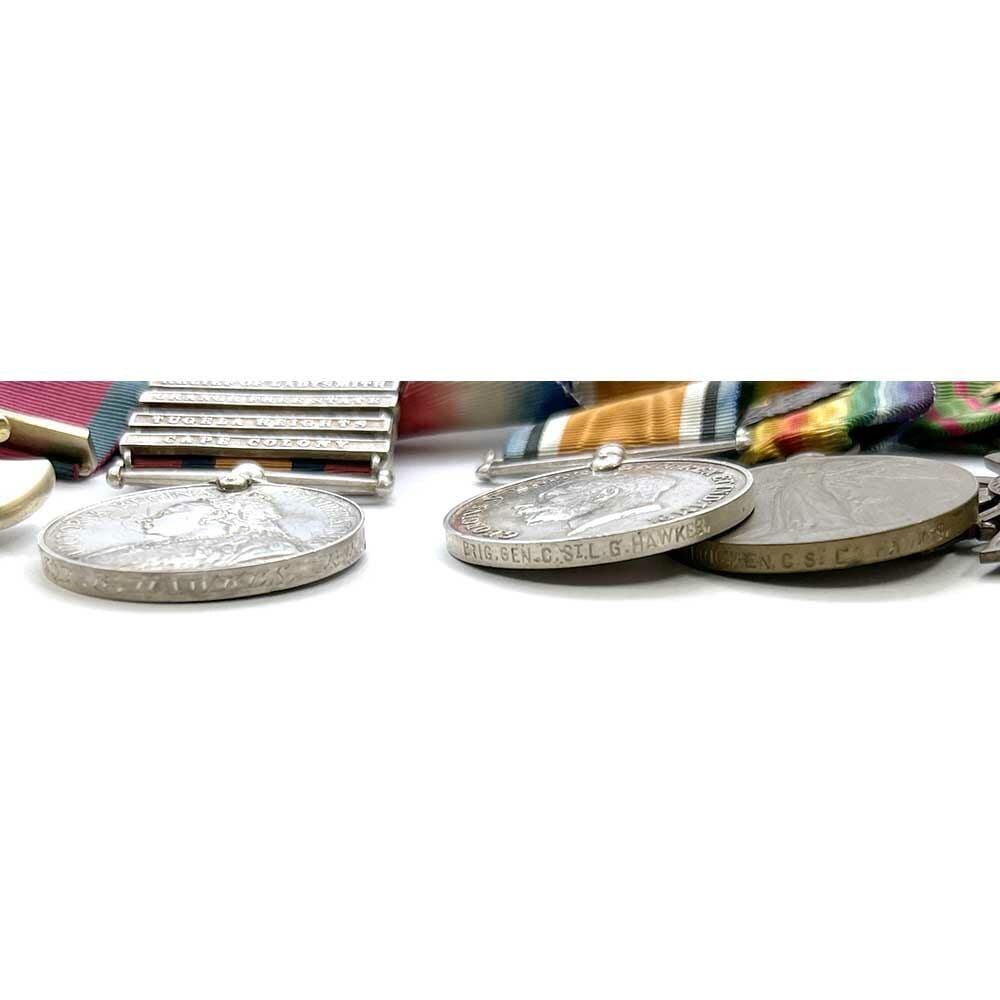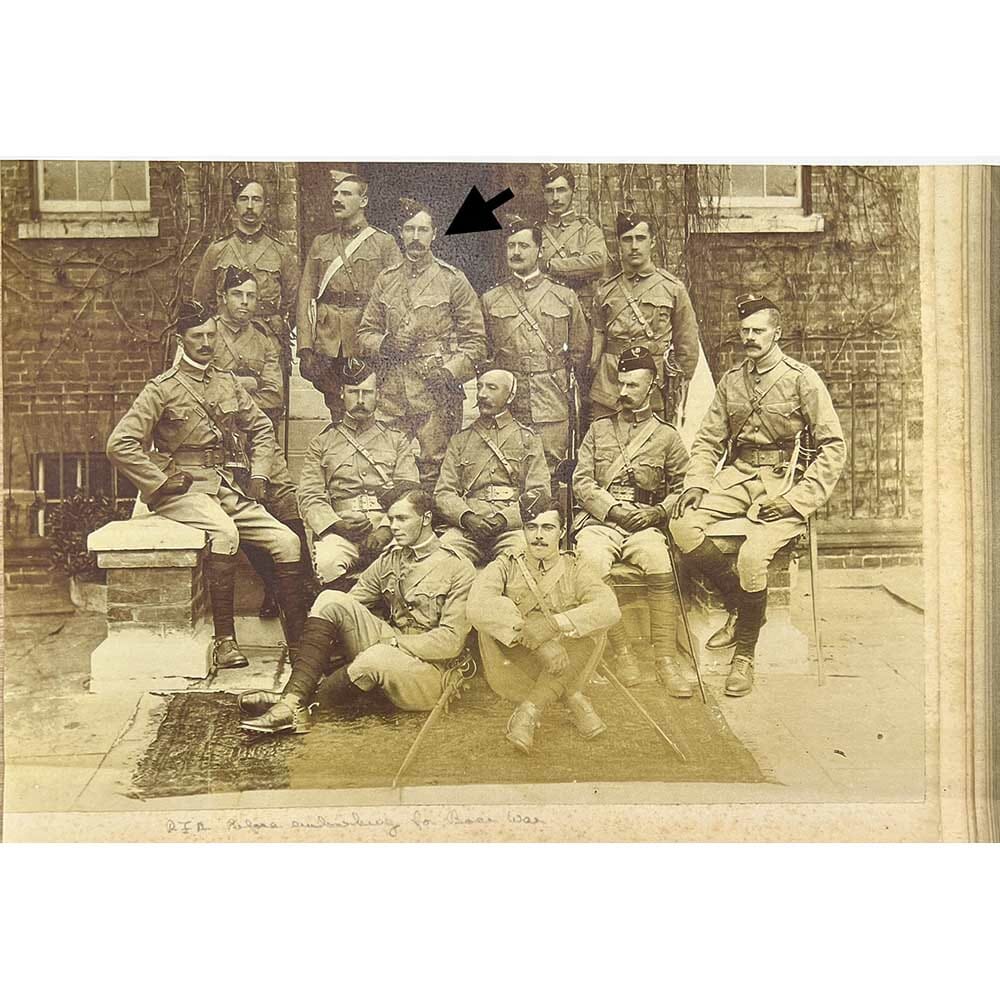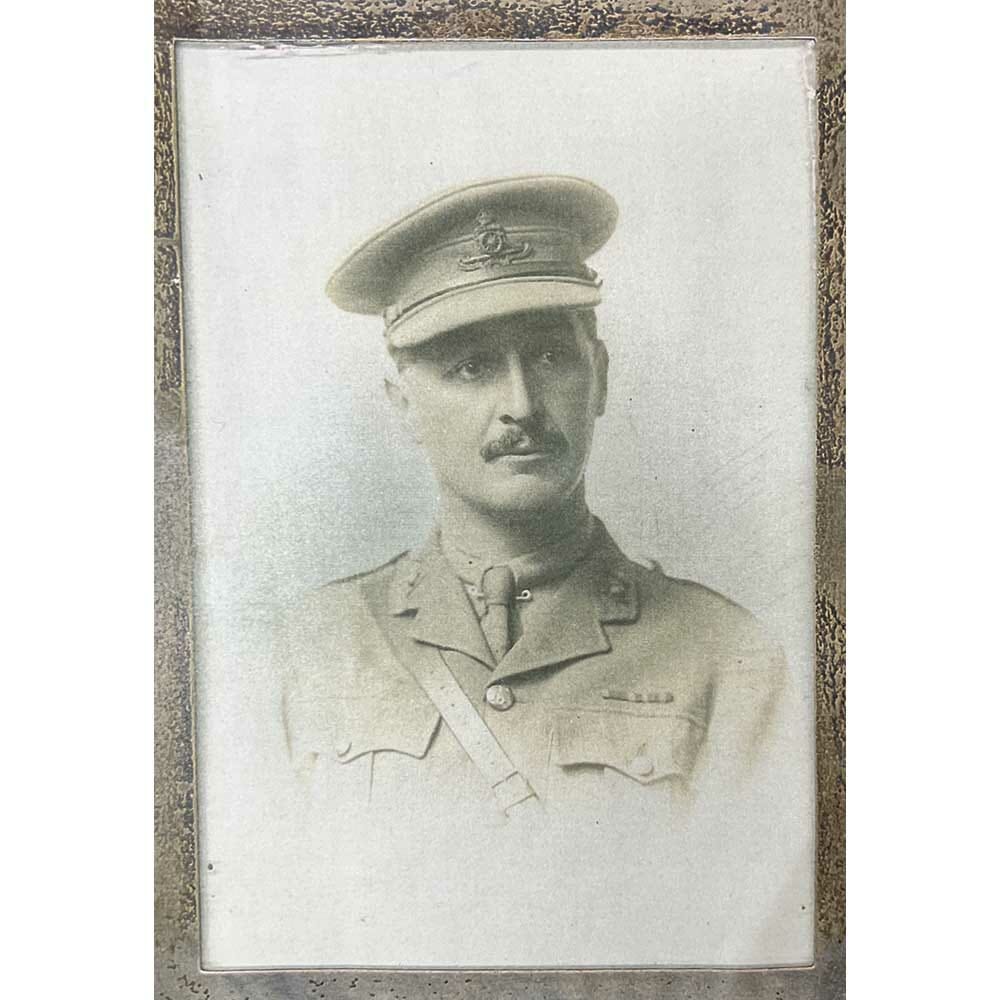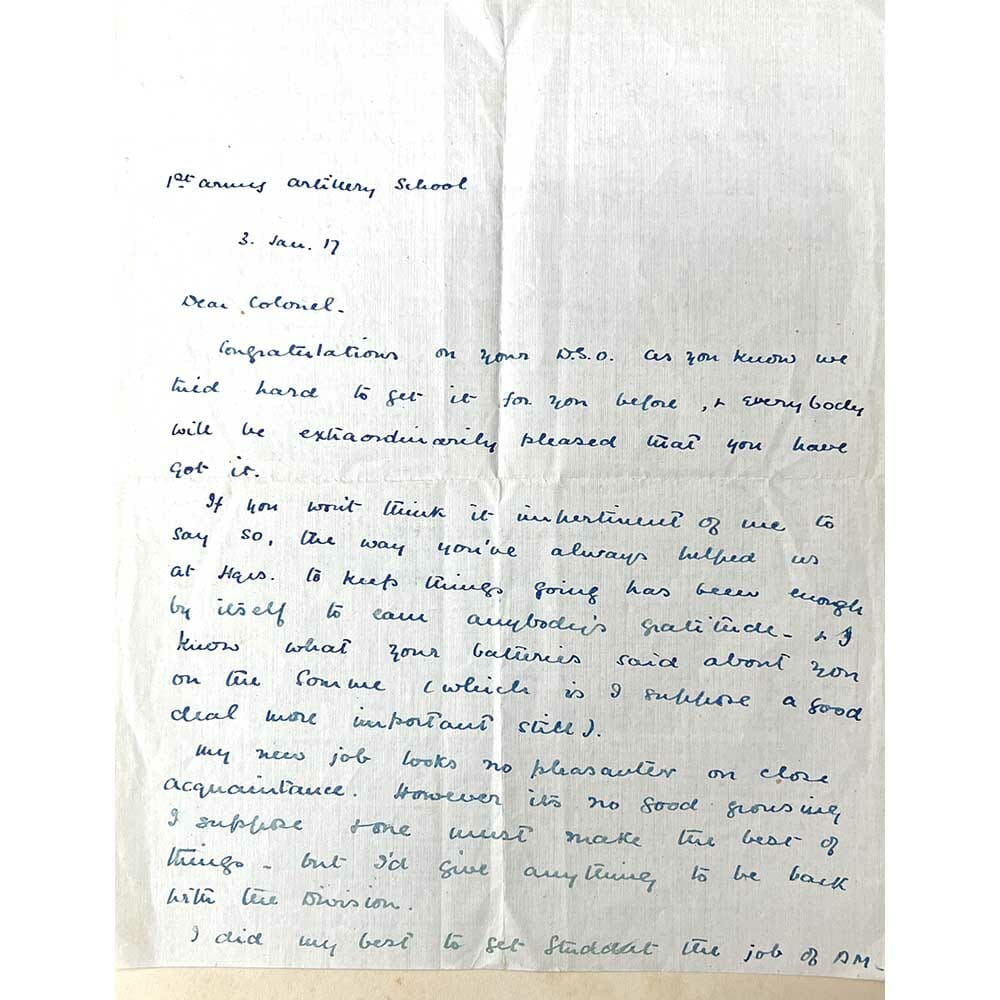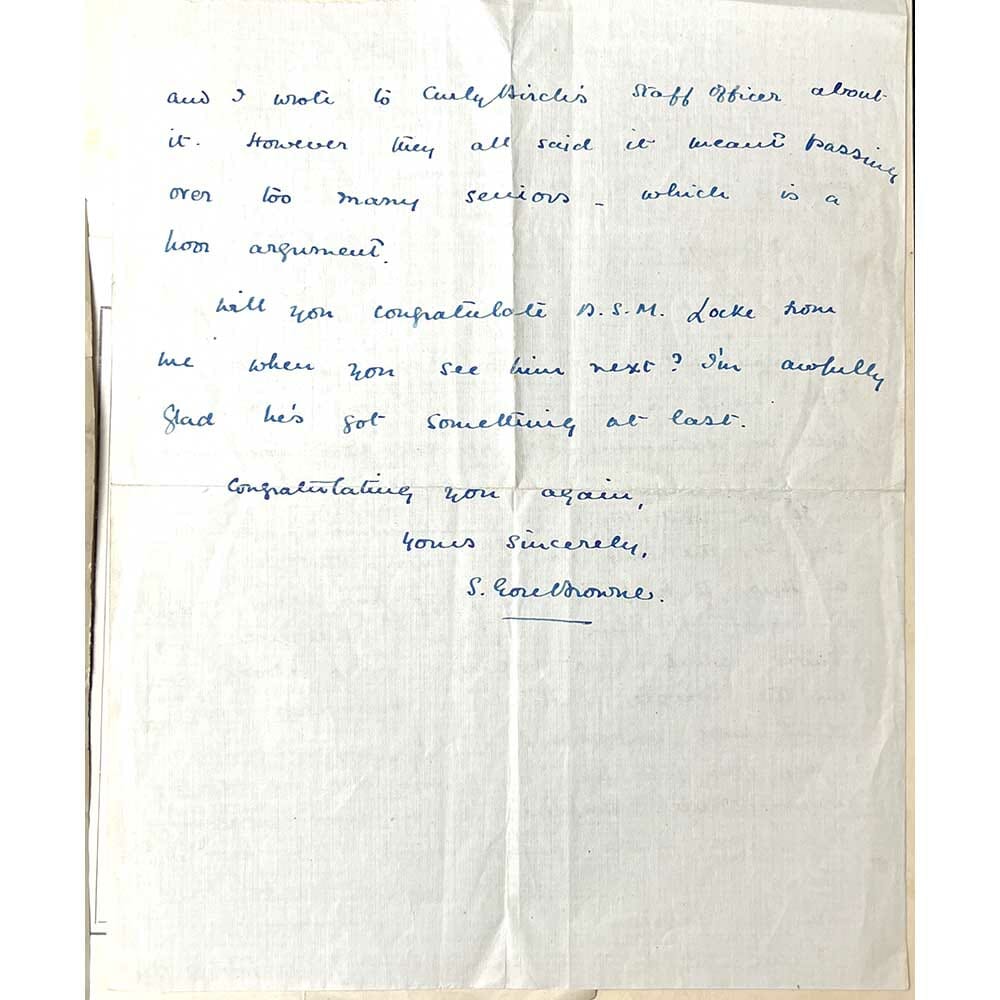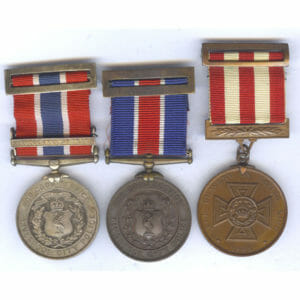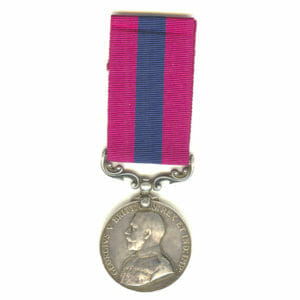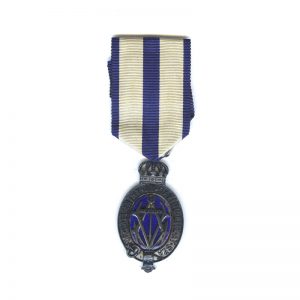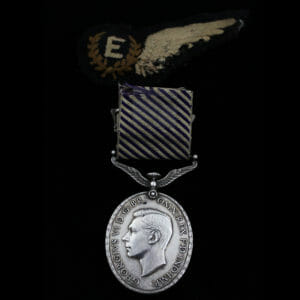Description
Distinguished Service Order, GV, Companion of the Order of St Michael and St George, Neck Badge, Queen’s South Africa Medal, 6 bars, Cape Colony, Tugela Heights, Orange Free State, Relief of Ladysmith, Transvaal, South Africa 1901, 1914 Star, with “Slider” Bar, British War Medal, Victory Medal (Type 1 Rare), with Original MID Oakleaf, French Croix du Guerre with Gold star, Brigadier General Corlis St Leger Gilman Hakwes, Royal Field Artillery.
QSA officially engraved Officer style: “Capt C. St. L. G. Hawkes. R.F.A.” (served 66th Battery)
1914 Star impressed: “Major C. St. L. G. Hawkes. R.F.A.” Star gilded with matching contemporary copy “Slider” bar (commonly seen gilded to high ranking officers)
WW1 Pair impressed: “Brig. Gen. C. St. L. G. Hawkes” Victory Medal is a very early and rare example of the Chocolate coloured Type 1 Victory Medal.
Medals all contemporarily swing mounted for wear on silk ribbons, apart from CMG which also has the lengthy original silk ribbon with clips.
With his original silk uniform ribbon bar circa 1918 with ribbons for 1914 Star, QSA, DSO, CMG.
His dog tags on string with gold sweetheart locket with photo of his wife inside.
With a small archive of letters, copy photographs, Christmas cards, these contained in an original copy of Orders, medal, Decorations of the World by Capt Jocelyn, 1934.
His sons original condolence slip for WW2.
Fantastic Set of Matching Miniatures in contemporary Spink case including Gold DSO offered in next lot, J7424.
Award of the Distinguished Service Order, announced London Gazette, 1st January 1917,
Award of the Order of St Michael and St George, announced London Gazette, 1st January 1919.
Award of the French Croix du Guerre, announced London Gazette, 19th June 1919.
London Gazette, 12th December 1950, “Commission Signed by the Lord Lieutenant of Pembrokeshire” “Lieutenant Colonel Corlis St Leger Gillman Hawkes, CMG DSO, of Milton House, Tenby, Pembrokeshire, to be a Deputy Lieutenant for the county of Pembroke, dated 6th December 1950.”
As a young Lieutenant he received a broken leg courtesy of the Boers who derailed the train he was on, the ensuing ambush led to a number of officers and men killed;
Westminster Gazette 11th Oct 1900:
“ANOTHER RAILWAY INCIDENT…
An unfortunate incident happened yesterday at Kaap Muiden owing to a train upsetting on the diversion over the Kaap River. 3 men were killed, 15 injured, and Lieutenant C. Hawkes had his leg broken. All belonging to the 66th Battery R.F.A. About 40 animals were killed or badly injured.
In the Morning, to inquire into the mischief, Captain Paget, with Lt Stubbs and Sewell and 18 men of the Vlakfontein Garrison, went on an Engine and Truck to the scene of the disaster. The Boers, of course, were waiting for their happy chance, and promptly assailed the party. The fighting at this time was fast and furious. On hearing of the attack Captain Stewart (Rifle Brigade) with 40 men hastened to the rescue, and there, fighting, fell.
A private in the Rifle Brigade was also killed, and among the injured was Captain Paget and Lieut Stubbs. 5 Men attached to the R.E. were also wounded, Lieut Sewell, R.E. and 10 men of the Rifle Brigade were captured.”
Shortly afterwards Lt Hawkes was on the sick list, recovering in the hospital when his Battery, the 66th, were engaged heavily at Colenso and took part in their famous “Saving of the Guns” Victoria Cross action.
His Life and Career:
Corlis St Leger Gillman Hawkes, was born on 23rd March 1871 in Passage West, Cork, Ireland.
His father Corliss Hawkes was a Corn Merchant, his mother was Jane Cotter (Williamson).
He was educated circa 1890 at the Collegiate School, 86 Patrick Street, Cork, The Cork Constitution 12th April 1890 records: “At the March Exam, Mr St Leger Hawkes passed the Preliminary (Army) exam in all subjects.”
He first received his commission into the Artillery aged 22 on 19th August 1893, having joined from the Limerick City Artillery Militia.
The local announcement of his Commission, Cork Constitution 8th Sept 1893:
“SUCCESS OF A CORKMAN, Mr Corliss St Leger Gillman Hawkes has been gazetted to the Royal Artillery, having obtained one of the two commissions given in the Spring Examinations. He was prepared for his preliminary by Mr Dickson, South Terrace.”
Promoted to Captain on 30th June 1900,
Daily Telegraph 24th Sept 1907:
AUXILIARY FORCES
Captain C. St. L. G. Hawkes, Royal Field Artillery, has been selected by the Army Council for the appointment of adjutant to the 1st Monmouth Royal Garrison Artillery (Volunteers), with HQ at Newport, in succession to Captain W. Macdonald, R.A.”
Promoted Major 20th July 1910.
Composition of Headquarters, British Armies In France, lists him as “Headquarters of Divisional Artillery, Commander, Lt Colonel (Temporary Brigadier General) C. St. L. G. Hawkes, D.S.O. R.A.”
He retired to Wales and lived in Pembrokeshire, during 1950 he was made Deputy Lieutenant of the County.
He died during 1963 having reached the age of 92 years old.
During 1920-1 he had a son, who he named after himself, Corlis St Leger Hawkes.
During WW2 he naturally joined up and became Pilot Officer 128712 with the RAFVR and found himself serving as a Pilot with 267 Squadron in Egypt.
However he was killed in a crash on 22nd August 1942 aged only 21.
On 22nd October 1942, He was onboard Lodestar EW984 as as 2nd Pilot on non operational flight, being the 2nd Pilot to Hot Shot pilot Wing Commander John Patrick Stracey Smyth DFC.
On board was the 3 Pilots with 10 passengers, all men of 267 Squadron RAF, on board Lodestar EW984, Apparently Wg Cdr Smyth wanted to do a Training Flight and perhaps chose to show off his Piloting skills that had won him a DFC.
“At approximately 1530 hours on 22nd October, I saw a Lodestar become airborne and climb to about 600 feet in a steep right had climbing turn, that is, against the circuit.
The aircraft then dived across the camp over the tents at approximately 15 feet. The aircraft then did a climbing turn to the left though approximately 270 degrees and it then did another diving turn across the camp from about 200 feet. It approached the Mess Tent at approximately 8 feet above the ground and failed to clear it. It struck the tent with it’s left wing and I think, but am not sure, that a piece of the left wing came off. The aircraft then climbed slightly, rolled on its back and struck the ground inverted, bursting into flames.”
In the findings of the Court of Enquiry the court found “In the court’s opinion, Wing Commander JPS Smyth was directly to blame for the accident by flight at a dangerously low height over the camp, and was guilty of culpable negligence resulting in the loss of 12 lives in addition to his own, the loss of an aircraft and injuries to 1 civilian and 6 native workmen.”
